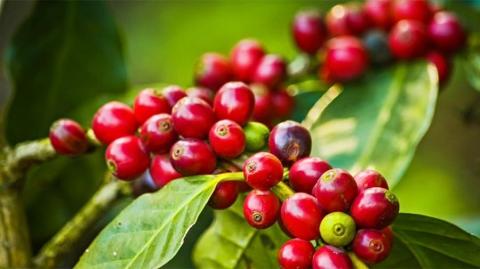In efforts to rapidly develop the nation’s economy, agriculture and livestock breeding – being the primary livelihood for the majority of the ethnic people in the country and serving as a vital artery of the national economy – play a crucial role. Therefore, promoting and expanding industries based on these sectors proves to be the most effective approach.
In efforts to rapidly develop the nation’s economy, agriculture and livestock breeding – being the primary livelihood for the majority of the ethnic people in the country and serving as a vital artery of the national economy – play a crucial role. Therefore, promoting and expanding industries based on these sectors proves to be the most effective approach.
Myanmar’s geographical conditions provide strong potential for the successful development of diverse crops, fruits, and livestock industries. It is therefore crucial to utilize this advantage effectively and efficiently. Since agricultural and livestock activities are primarily based in rural areas, focusing on these sectors will help raise rural incomes and, consequently, reduce poverty levels. The successful development of agriculture and livestock will play a significant role in advancing poverty alleviation efforts across the country.
Therefore, to ensure the food security of the entire population, efforts must be made to achieve year-on-year progress in the cultivation of paddy, oilseed crops, various pulses, and meat and fish production. It is necessary to continue striving to meet the targeted goals for the ten main designated crops. Only then can the nation guarantee food security for its citizens, increase surplus crop production, and export these surplus products to foreign markets to generate national revenue.
As the government works to transform the country into an Agricultural Powerhouse, it has focused on promoting the cultivation of regionally suitable, profitable crops with strong potential in international markets. To foster robust and sustainable crop production, the government has facilitated access to modern and advanced agricultural techniques. Furthermore, to ensure affordable availability of essential agricultural inputs for farming and livestock, support has been provided not only through imports but also by encouraging domestic production and distribution of these resources.
According to the 2024 preliminary census, about 70 per cent of Myanmar’s population lives in rural areas, and over half of that rural population is involved in agriculture, livestock, or forestry in some capacity. To develop agro-based industries rooted in agriculture, it is important to encourage domestic investors and financially capable entrepreneurs to actively invest in and engage with these sectors. At the same time, priority should be given to ensuring access to essential inputs, financial support, and human resource development. With the establishment of basic education schools that offer courses in agriculture, livestock, and industrial technology, students from these institutions are expected to become a dependable and skilled workforce for the country’s agricultural and livestock industries in the future.
Therefore, to ensure the food security of the entire population, efforts must be made to achieve year-on-year progress in the cultivation of paddy, oilseed crops, various pulses, and meat and fish production. It is necessary to continue striving to meet the targeted goals for the ten main designated crops. Only then can the nation guarantee food security for its citizens, increase surplus crop production, and export these surplus products to foreign markets to generate national revenue.
In efforts to rapidly develop the nation’s economy, agriculture and livestock breeding – being the primary livelihood for the majority of the ethnic people in the country and serving as a vital artery of the national economy – play a crucial role. Therefore, promoting and expanding industries based on these sectors proves to be the most effective approach.
Myanmar’s geographical conditions provide strong potential for the successful development of diverse crops, fruits, and livestock industries. It is therefore crucial to utilize this advantage effectively and efficiently. Since agricultural and livestock activities are primarily based in rural areas, focusing on these sectors will help raise rural incomes and, consequently, reduce poverty levels. The successful development of agriculture and livestock will play a significant role in advancing poverty alleviation efforts across the country.
Therefore, to ensure the food security of the entire population, efforts must be made to achieve year-on-year progress in the cultivation of paddy, oilseed crops, various pulses, and meat and fish production. It is necessary to continue striving to meet the targeted goals for the ten main designated crops. Only then can the nation guarantee food security for its citizens, increase surplus crop production, and export these surplus products to foreign markets to generate national revenue.
As the government works to transform the country into an Agricultural Powerhouse, it has focused on promoting the cultivation of regionally suitable, profitable crops with strong potential in international markets. To foster robust and sustainable crop production, the government has facilitated access to modern and advanced agricultural techniques. Furthermore, to ensure affordable availability of essential agricultural inputs for farming and livestock, support has been provided not only through imports but also by encouraging domestic production and distribution of these resources.
According to the 2024 preliminary census, about 70 per cent of Myanmar’s population lives in rural areas, and over half of that rural population is involved in agriculture, livestock, or forestry in some capacity. To develop agro-based industries rooted in agriculture, it is important to encourage domestic investors and financially capable entrepreneurs to actively invest in and engage with these sectors. At the same time, priority should be given to ensuring access to essential inputs, financial support, and human resource development. With the establishment of basic education schools that offer courses in agriculture, livestock, and industrial technology, students from these institutions are expected to become a dependable and skilled workforce for the country’s agricultural and livestock industries in the future.
Therefore, to ensure the food security of the entire population, efforts must be made to achieve year-on-year progress in the cultivation of paddy, oilseed crops, various pulses, and meat and fish production. It is necessary to continue striving to meet the targeted goals for the ten main designated crops. Only then can the nation guarantee food security for its citizens, increase surplus crop production, and export these surplus products to foreign markets to generate national revenue.

Taninthayi Region will expand its coffee plantations by 1,000 acres in the 2025-2026 financial year, as the crop is recognized as one of the region’s potential commercial crops, according to the Taninthayi Region Agriculture Department.
With suitable water sources, land conditions and climate, Taninthayi Region is not only home to perennial crops such as rubber, oil palm and coconut but also favourable for cultivating Robusta coffee. Due to these advantages, the department is implementing plans to expand coffee cultivation across the region this year.
Taninthayi Region will expand its coffee plantations by 1,000 acres in the 2025-2026 financial year, as the crop is recognized as one of the region’s potential commercial crops, according to the Taninthayi Region Agriculture Department.
With suitable water sources, land conditions and climate, Taninthayi Region is not only home to perennial crops such as rubber, oil palm and coconut but also favourable for cultivating Robusta coffee. Due to these advantages, the department is implementing plans to expand coffee cultivation across the region this year.
“In the 2024-2025 financial year, we expanded coffee by 1,874 acres in Taninthayi Region. As of today, the total area under coffee cultivation has reached 3,022 acres. In Myeik District alone, 940 acres were added in 2024-2025, bringing the district’s total to 1,200 acres. For 2025-2026, we plan to expand by 1,000 more acres region-wide, including 500 acres in Myeik District. We have already nurtured 170,000 coffee seedlings for distribution,” said an official from the regional Agriculture Department.
Coffee farmers in these areas are receiving the seedlings free of charge from the department. Farmers are also supported with technical advice on common cultivation issues, such as soil quality, good seed varieties, pest and disease control, and planting techniques. These services are available at any time through the respective district and township agriculture offices.
“Coffee trees are planted at the beginning of the rainy season, in June. They start bearing fruits in their fourth or fifth year. Harvesting takes place in December and January. Locally grown coffee is also being exported,” added the official.
Moreover, land-use efficiency is being improved by planting coffee as an intercropping crop between other perennial crops like rubber and areca palm. The plan also aims to increase farmers’ income, improve livelihoods, create local job opportunities, and help Myanmar coffee enter international markets. To support this, the department is providing both training and free seedlings to farmers. Coffee plantations in Myeik District have been established in Taninthayi and Mawtaung townships, as well as in Bokpyin Township, with acreage expanding in targeted areas.
Farmers can maintain regular contact with the department for ongoing technical support. As coffee cultivation expands, farmers’ incomes and the local socio-economic conditions are expected to improve. — Myint Oo (Myeik)/KZL
Source: The Global New Light of Myanmar
Taninthayi Region will expand its coffee plantations by 1,000 acres in the 2025-2026 financial year, as the crop is recognized as one of the region’s potential commercial crops, according to the Taninthayi Region Agriculture Department.
With suitable water sources, land conditions and climate, Taninthayi Region is not only home to perennial crops such as rubber, oil palm and coconut but also favourable for cultivating Robusta coffee. Due to these advantages, the department is implementing plans to expand coffee cultivation across the region this year.
“In the 2024-2025 financial year, we expanded coffee by 1,874 acres in Taninthayi Region. As of today, the total area under coffee cultivation has reached 3,022 acres. In Myeik District alone, 940 acres were added in 2024-2025, bringing the district’s total to 1,200 acres. For 2025-2026, we plan to expand by 1,000 more acres region-wide, including 500 acres in Myeik District. We have already nurtured 170,000 coffee seedlings for distribution,” said an official from the regional Agriculture Department.
Coffee farmers in these areas are receiving the seedlings free of charge from the department. Farmers are also supported with technical advice on common cultivation issues, such as soil quality, good seed varieties, pest and disease control, and planting techniques. These services are available at any time through the respective district and township agriculture offices.
“Coffee trees are planted at the beginning of the rainy season, in June. They start bearing fruits in their fourth or fifth year. Harvesting takes place in December and January. Locally grown coffee is also being exported,” added the official.
Moreover, land-use efficiency is being improved by planting coffee as an intercropping crop between other perennial crops like rubber and areca palm. The plan also aims to increase farmers’ income, improve livelihoods, create local job opportunities, and help Myanmar coffee enter international markets. To support this, the department is providing both training and free seedlings to farmers. Coffee plantations in Myeik District have been established in Taninthayi and Mawtaung townships, as well as in Bokpyin Township, with acreage expanding in targeted areas.
Farmers can maintain regular contact with the department for ongoing technical support. As coffee cultivation expands, farmers’ incomes and the local socio-economic conditions are expected to improve. — Myint Oo (Myeik)/KZL
Source: The Global New Light of Myanmar


